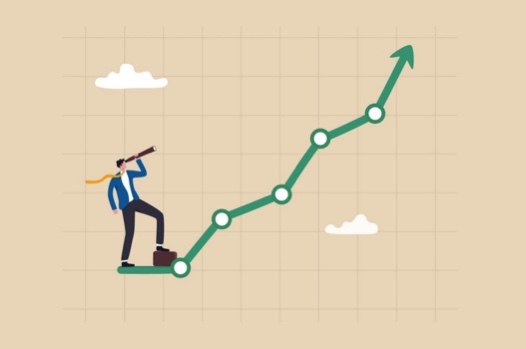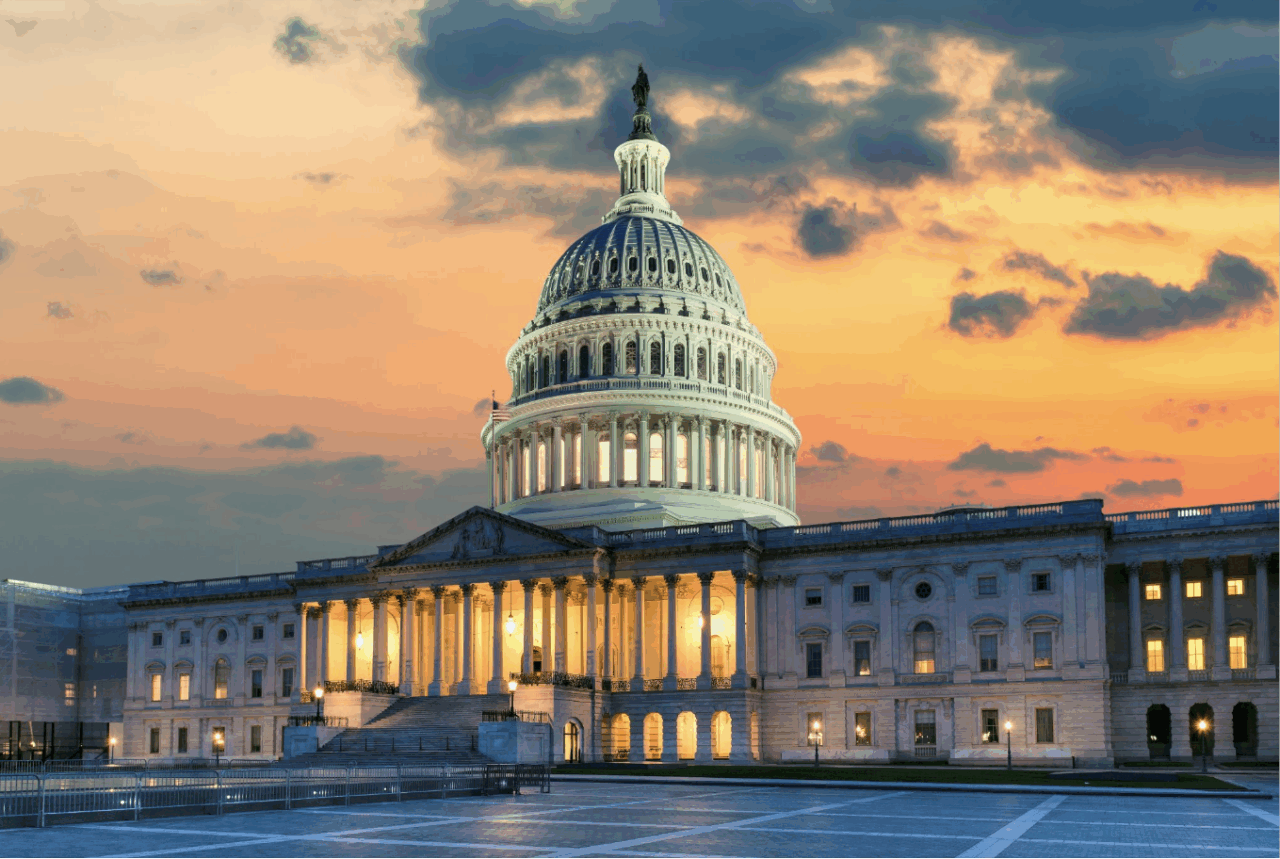Biden’s Economic Record: A Guide for Advocates
This Navigator Research report contains data on Americans’ latest perceptions on the economy, including tracking on how Americans feel about the state of the U.S. economy and their personal financial situations, which statements about the country’s economic performance Americans find most convincing and true, and the most convincing reasons to support President Biden’s economic agenda.
While a vast majority still rate the state of the national economy negatively, there is increasing confidence in personal financial situations and a decline in the share who think the economy is getting worse.
Two in five feel confident in their personal financial situation (40 percent confident – 58 percent uneasy), a 7-point increase in confidence since late May (33 percent confident – 65 percent uneasy). 72 percent of Americans rate the current state of the economy as either “poor” or “not so good,” a 5-point decrease over that period (77 percent in May) and an 8-point decline among those rating the economy as “poor” (from 39 percent to 31 percent). Further, while a majority believe the economy is getting worse (54 percent), this share has also declined by 8 points since late May (from 62 percent).
- A majority of Americans hold an unfavorable view of trickle-down economics (net -28; 15 percent favorable – 43 percent unfavorable), with net favorability underwater by 27 points among independents (12 percent favorable – 39 percent unfavorable) and even net negative among Republicans (net -9; 23 percent favorable – 32 percent unfavorable), particularly Republicans in households making less than $50,000 a year (net -14; 19 percent favorable – 33 percent unfavorable). Additionally, subgroups that are particularly negative toward trickle-down economics include those living in a household with a union member (net -43; 12 percent favorable – 55 percent unfavorable), Americans living in households earning more than $100,000 per year (net -33; 18 percent favorable – 51 percent favorable), and a plurality of those working white collar jobs (net -33; 16 percent favorable – 49 percent unfavorable).
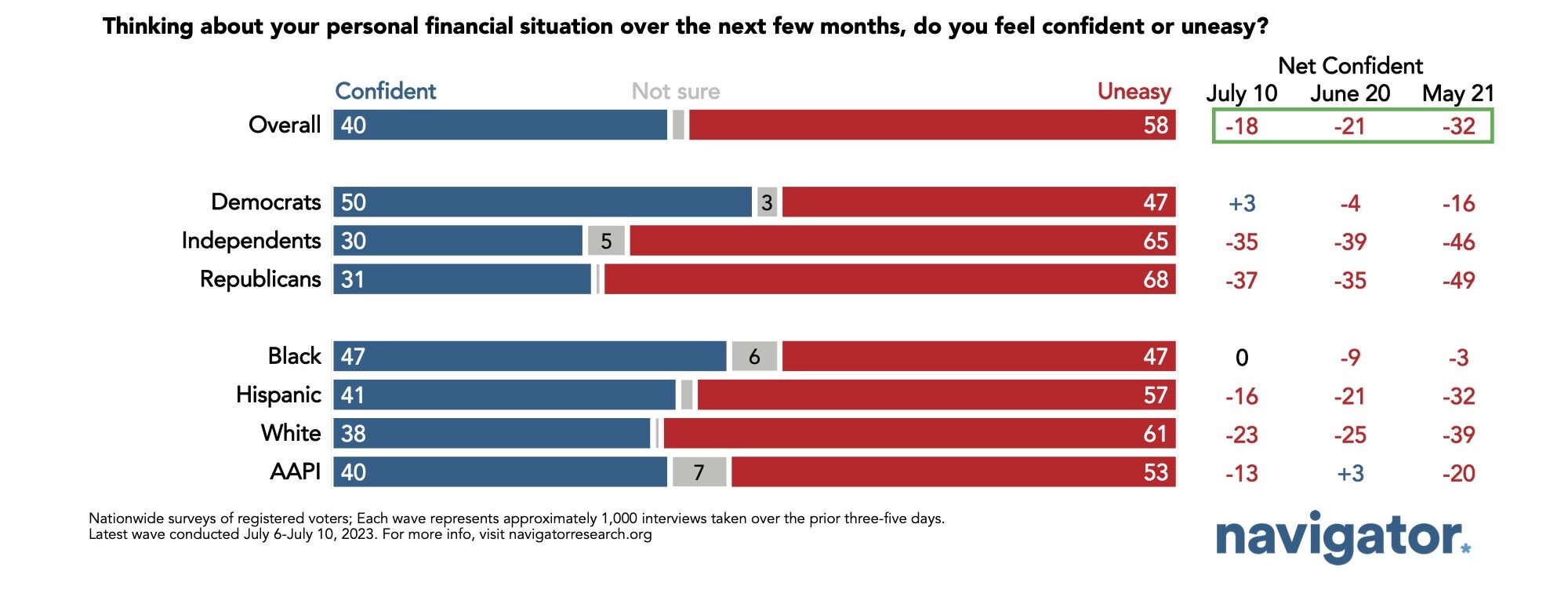
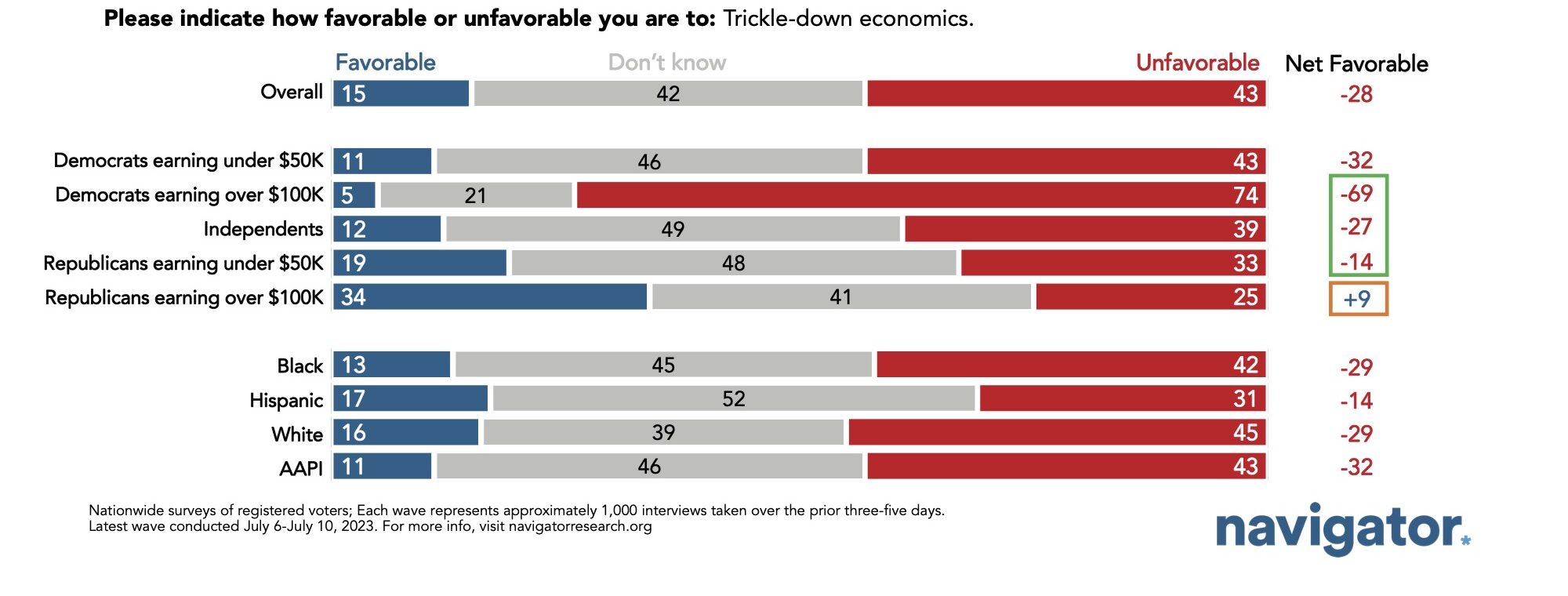
The most credible economic proof points center on workforce participation, health insurance, unemployment rates.
The most convincing and believable statements to Americans that the economy is improving are ones about high shares of working-age Americans and specifically working-age women in the workforce, record applications for new small businesses over the last two years, and the decline in uninsured Americans compared to before the pandemic. In a split-sample test, a number of statements about the economy were shown to respondents, with half being asked whether they were convincing reasons to believe the economy is improving under President Biden and the other half being asked whether they believed the statements to be true or false. The following statements were found to be most convincing and true:
- The share of working-age women in the workforce is the highest it’s been in 70 years (58 percent convincing, 74 percent true);
- The share of working-age Americans in the workforce is higher than at any time in the last 15 years (51 percent convincing, 59 percent true);
- There were 10.5 million applications for new small businesses in 2021 and 2022 – the strongest 2 years on record (50 percent convincing, 55 percent true); and,
- The number of Americans without health insurance has fallen by nearly 6 million compared to before the pandemic (49 percent convincing, 57 percent true).
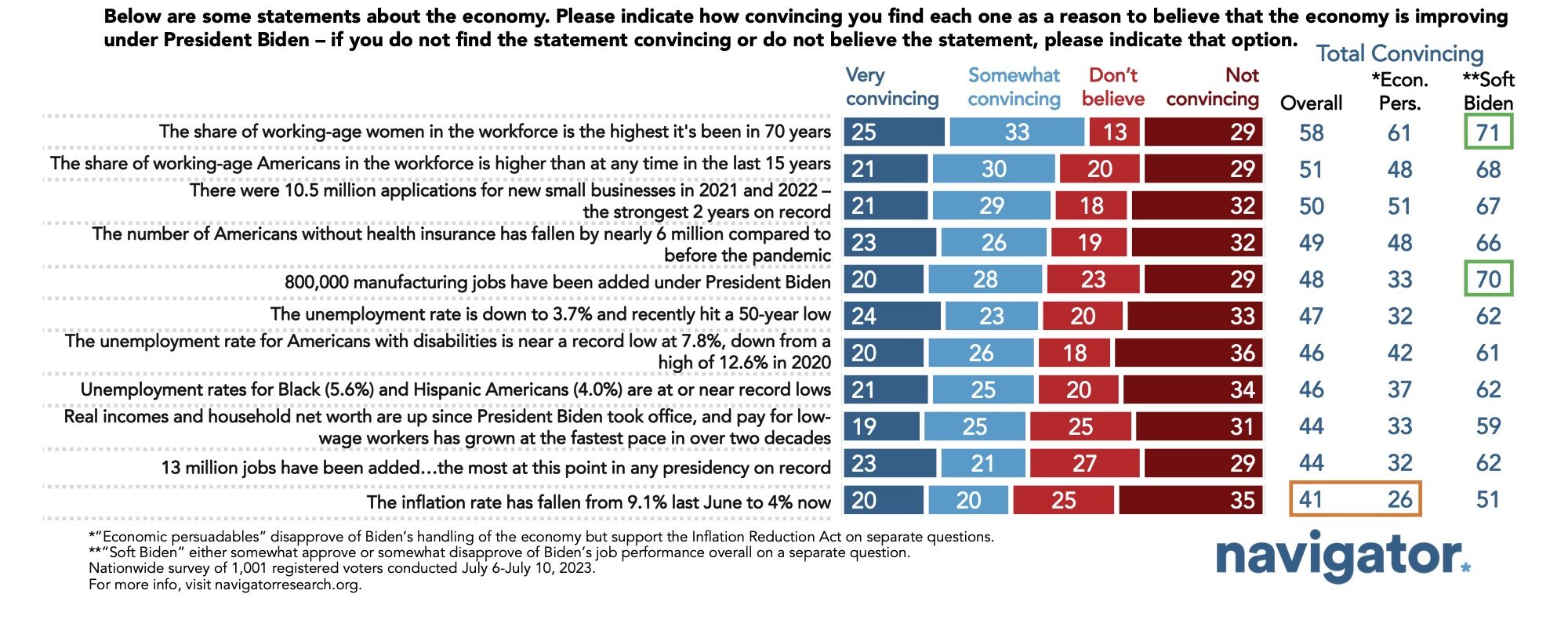
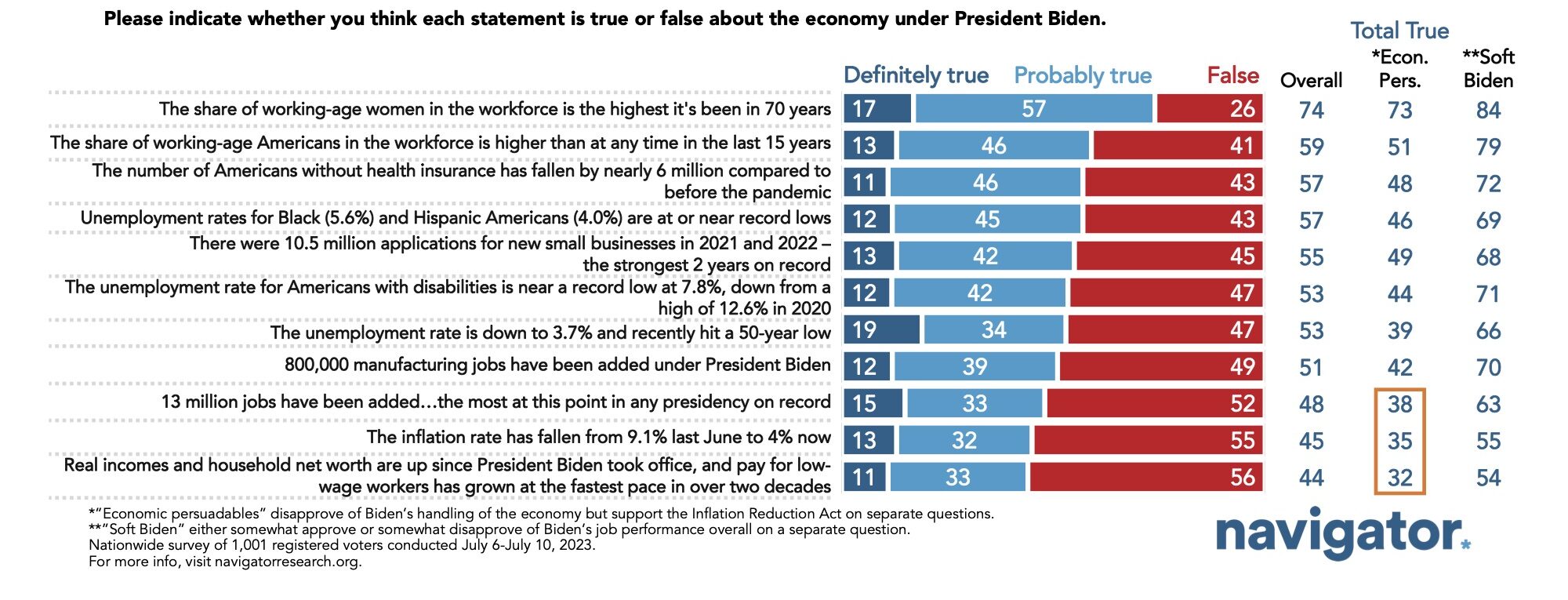

Helping middle class most convincing aspect of Biden’s economic agenda.
The most convincing reasons to support Biden’s economic agenda include creating more affordable health care for families and seniors, including lowering prescription drug costs and capping insulin at $35 a month for seniors, investing in workers and growing the economy “from the middle out and bottom up, not the top down,” and increased infrastructure projects. Three in five Americans find it convincing that “President Biden took an important step to help American families make ends meet and afford the health care they need, including by signing into law legislation that lowers prescription drug costs and caps insulin at $35 a month for seniors” (net +30; 57 percent convincing – 27 percent not convincing). Other convincing statements include:
- President Biden believes we need to grow the economy from the middle out and the bottom up, not the top down. This means empowering and investing in workers, promoting competition, and lowering costs for families (54 percent convincing);
- Under President Biden’s leadership, there are now 35,000 infrastructure projects that are funded or already underway (52 percent convincing); and,
- President Biden is taking on the big corporations that put their bottom lines ahead of the American people, including big oil and gas and big pharmaceutical companies that want to price gouge American consumers (47 percent convincing).

Messaging on both the Inflation Reduction Act and Biden’s economic agenda move the needle in his economic favor.
After being shown a list of statements about President Biden’s overall economic agenda, Biden’s economic approval improves by a net 12 points overall, with greater improvement among lower-income Americans and independents. Initially, Biden’s economic approval is underwater by a net 19 points (38 percent approve – 57 percent disapprove); however, after reading statements about Biden’s economic agenda over the past two years, his approval shifts to net -7 (44 percent approve – 51 percent disapprove). The greatest shifts in approval are among independents (from net -44 to net -21) and Americans living in households earning under $50,000 per year (from net -22 to net -3).
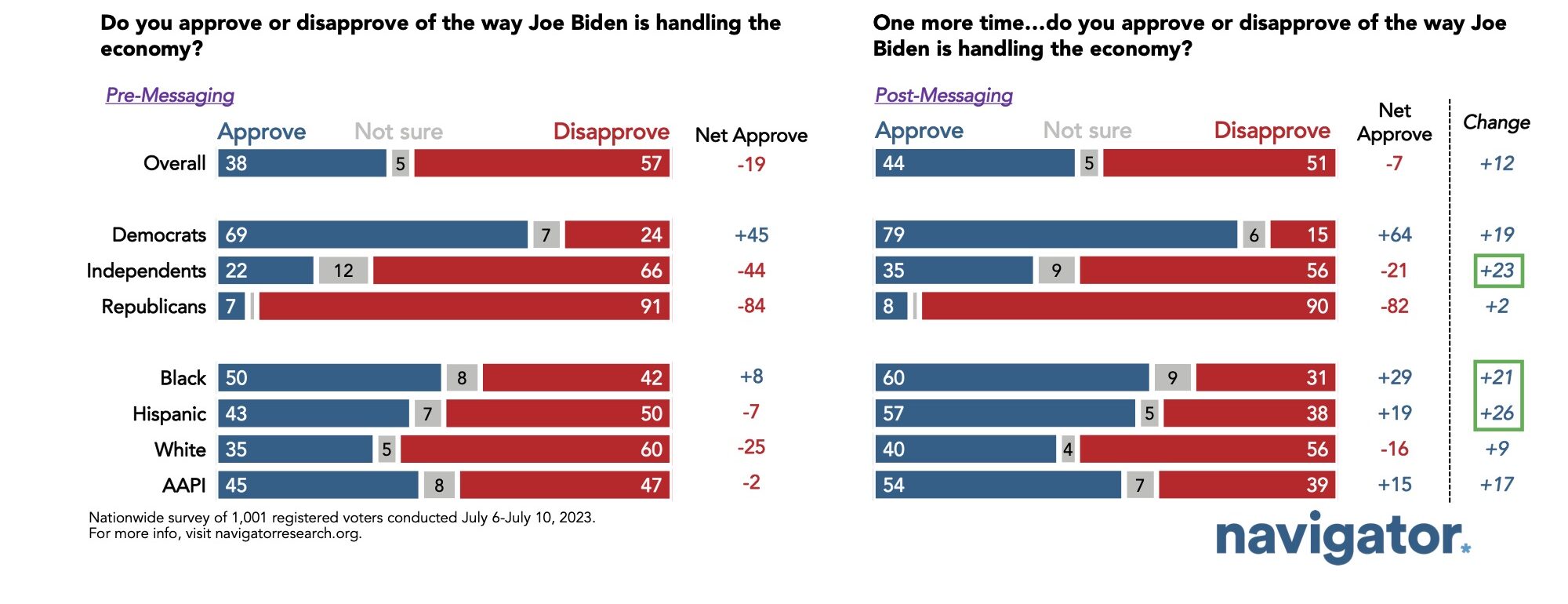
Read More
About The Study
Global Strategy Group conducted public opinion surveys among a sample of 1,001 registered voters from July 6-July 10, 2023. 102 additional interviews were conducted among Hispanic voters. 82 additional interviews were conducted among Asian American and Pacific Islander voters. 102 additional interviews were conducted among African American voters. 99 additional interviews were conducted among independent voters. The survey was conducted online, recruiting respondents from an opt-in online panel vendor. Respondents were verified against
a voter file and special care was taken to ensure the demographic composition of our sample matched that of
the national registered voter population across a variety of demographic variables.
